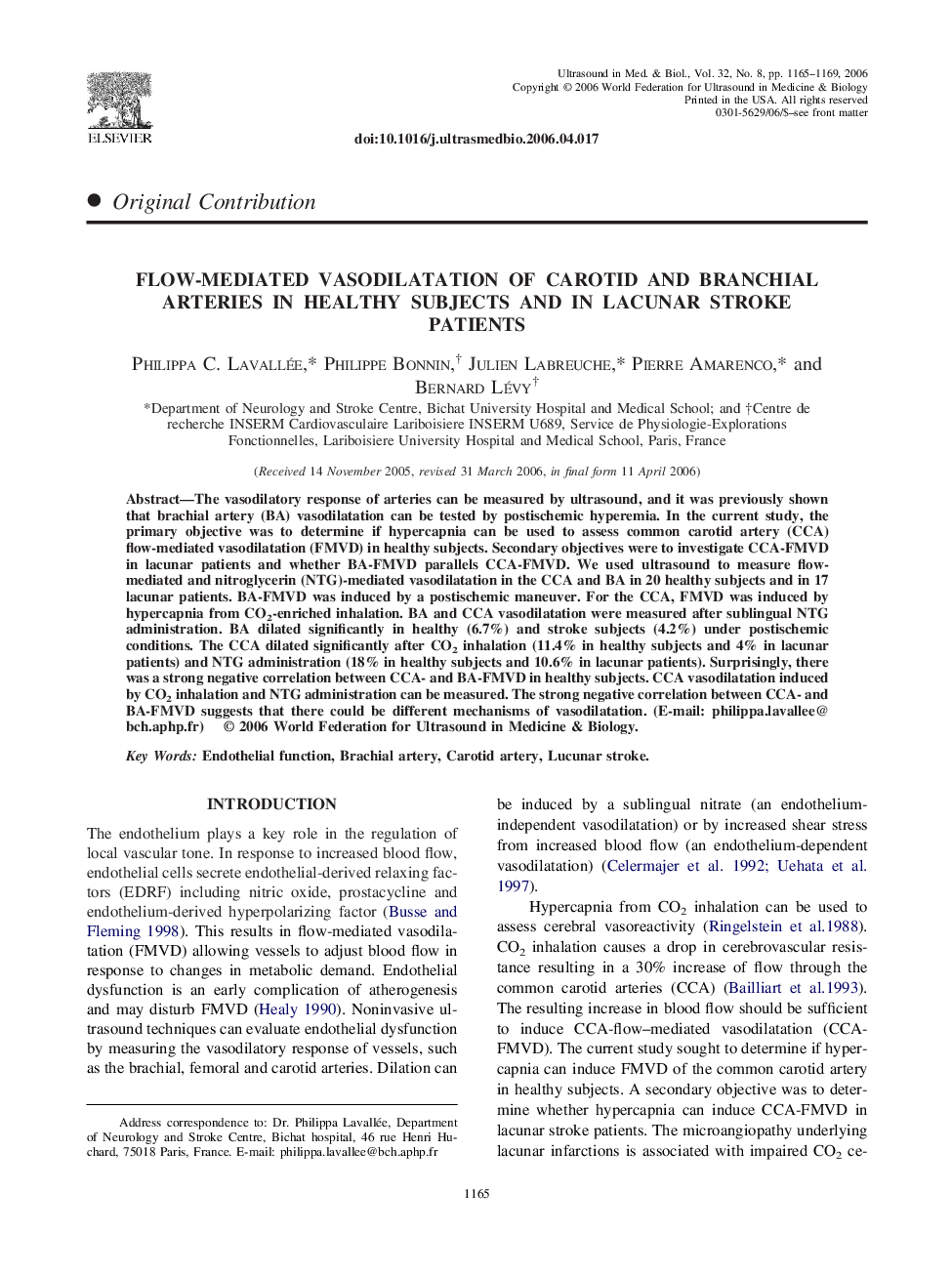| Article ID | Journal | Published Year | Pages | File Type |
|---|---|---|---|---|
| 1762118 | Ultrasound in Medicine & Biology | 2006 | 5 Pages |
Abstract
The vasodilatory response of arteries can be measured by ultrasound, and it was previously shown that brachial artery (BA) vasodilatation can be tested by postischemic hyperemia. In the current study, the primary objective was to determine if hypercapnia can be used to assess common carotid artery (CCA) flow-mediated vasodilatation (FMVD) in healthy subjects. Secondary objectives were to investigate CCA-FMVD in lacunar patients and whether BA-FMVD parallels CCA-FMVD. We used ultrasound to measure flow-mediated and nitroglycerin (NTG)-mediated vasodilatation in the CCA and BA in 20 healthy subjects and in 17 lacunar patients. BA-FMVD was induced by a postischemic maneuver. For the CCA, FMVD was induced by hypercapnia from CO2-enriched inhalation. BA and CCA vasodilatation were measured after sublingual NTG administration. BA dilated significantly in healthy (6.7%) and stroke subjects (4.2%) under postischemic conditions. The CCA dilated significantly after CO2 inhalation (11.4% in healthy subjects and 4% in lacunar patients) and NTG administration (18% in healthy subjects and 10.6% in lacunar patients). Surprisingly, there was a strong negative correlation between CCA- and BA-FMVD in healthy subjects. CCA vasodilatation induced by CO2 inhalation and NTG administration can be measured. The strong negative correlation between CCA- and BA-FMVD suggests that there could be different mechanisms of vasodilatation. (E-mail: philippa.lavallee@bch.aphp.fr)
Related Topics
Physical Sciences and Engineering
Physics and Astronomy
Acoustics and Ultrasonics
Authors
Philippa C. Lavallée, Philippe Bonnin, Julien Labreuche, Pierre Amarenco, Bernard Lévy,
